 |
| Jean Baptiste-Greuze (1724-1805) - Knitter Asleep |
Knitted goods both domestic and imported are seen in store inventories, personal inventories and on imported goods advertisements in the Carolinas. Knitted or worsted caps, stockings, Scotch "bonnets" for men, mitts and mittens were the most common knitted items in the 18th century.
For the love of god - please do not use Outlander as a historical resource for knitted or crocheted items. They are modern interpretations plus there were no crocheted items during the 18th century. There were no knit shawls or sontags - those don't show until the 19th century for women. Crochet did not come around in popularity until the early to mid 19th century. I highly recommend Mara Riley's patterns and also Sally Pointer. If you are on Ravelry, they have patterns for sale there as well. 18th Century Material Culture page also a great resource for images of original items.
Okay....back to our regular scheduled program.
Scotch blue bonnets
 |
| "The North Carolina Weekly Gazette" New Bern, NC 24 December 1773 |
Anson county had many Scots-Irish settlers as well as New Hanover, Duplin, Bladen and Cumberland counties. Here is one example of a runaway enslaved person named SHIE from Anson County, North Carolina wearing a "scotch" bonnet.
I have found several bonnets listed in inventories in New Hanover County such as James McDonough. Talking among other historians from North Carolina, we agree that these more than likely were blue "scotch" bonnets.
 | |||
|
In Neill Buie's 1761 Cumberland County inventory, a bonnet (again more than likely a scotch bonnet) sold for 3 shillings, 4d. It is underlined in blue.
 |
| "North Carolina Estate Files, 1663-1979," Neill Buie, 1761; citing Cumberland County, North Carolina, United States, State Archives, Raleigh |
 |
| Source: Sally Pointer Example of plain scots bonnets or blue bonnet. |
Worsted Caps or Knit Caps
Particularly you see worsted caps or knit caps imported into the colonies and sold in stores.

Worsted, knit, milled caps are all seen being imported in the Colonies and including the Carolinas.
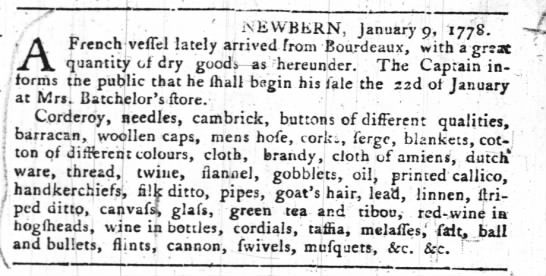 |
| North Carolina Weekly Gazette, New Bern NC 9 January 1778. |
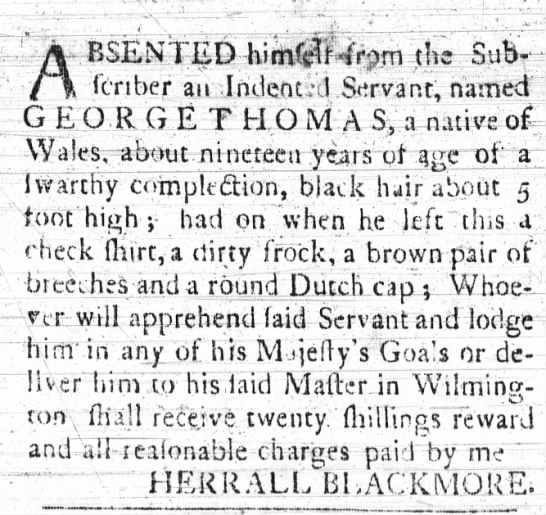 |
| The North Carolina Gazette, Wilmington NC 13 January 1773 |
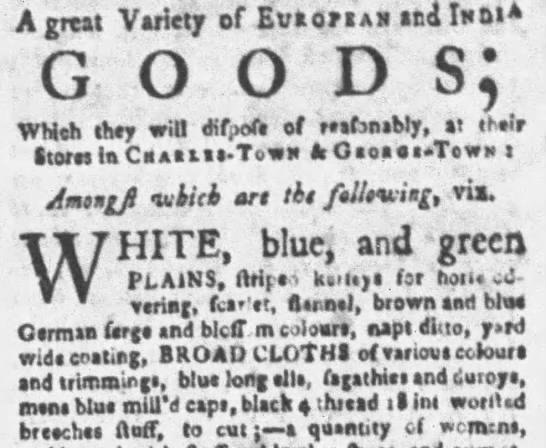 |
| "Mens blue mill'd caps" The South Carolina Gazette, Charleston SC 8 August 1768 |
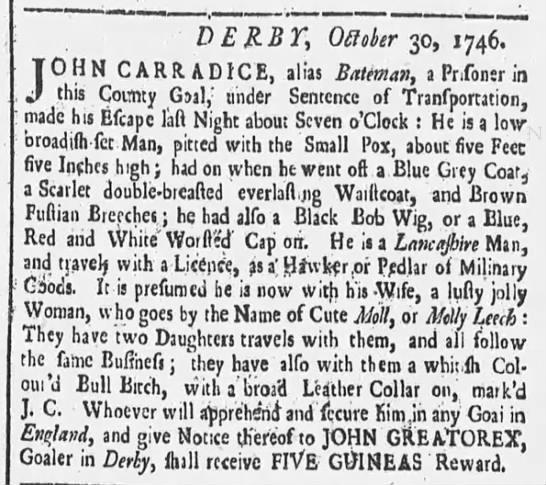 |
| The Derby Mercury, Derby Derbyshire, England 24 September 1746 Another variation of the woolen cap this one a blue, red and white worsted cap on. A runaway prisoner for the County Goal in Derby, England. |
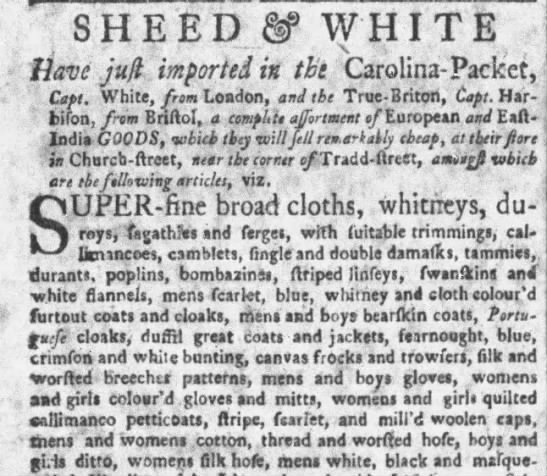 |
| The South Carolina Gazette, Charleston SC 12 November 1763 "Stripe, scarlet and mill'd woolen caps" |
I will close this part with a knitted cap that was found at Dry's Wharf at Brunswick Town/ Fort Anderson State Historic Site near Winnabow, North Carolina. The photos are courtesy from Brunswick Town/Fort Anderson
Based off the archaeological findings, the cap dates from 1748. My friend Hannah Smith wrote about the conservation work on it for her Master's Thesis, which I have linked here.
Based off the archaeological findings, the cap dates from 1748. My friend Hannah Smith wrote about the conservation work on it for her Master's Thesis, which I have linked here.
There is some debate if this was a stocking that was altered to create a men's cap, or was this someone who was learning to knit and created this unique cap.











Great post!
ReplyDeletehttp://www.larsdatter.com/18c/mens-caps.html
Greensboro Historical Museum 1926.155.0001, a knit liberty cap worn by militia officer Captain Arthur Forbis, mortally wounded at the Battle of Guilford Courthouse in 1781
also see
https://greensborohistory.org/rare-revolutionary-war-artifact-and-lecture